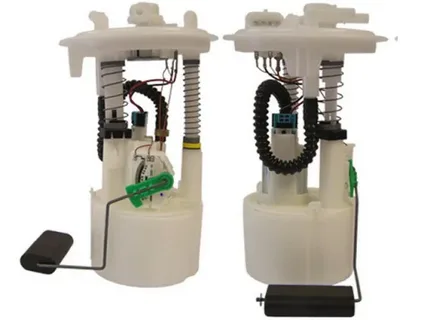Skin pigmentation issues, such as hyperpigmentation, melasma, and age spots, can significantly impact one’s appearance and confidence. Laser treatment has emerged as a popular option for addressing these concerns, promising effective and often noticeable results. However, a common question among those considering this approach is whether skin pigmentation treatment provides a permanent solution for skin pigmentation. This article delves into how laser treatments work, their effectiveness, and the factors influencing their long-term results.
Understanding Laser Treatment for Skin Pigmentation
Laser treatment for skin pigmentation involves using concentrated light beams to target and break down excess melanin in the skin. Melanin is the pigment responsible for skin color, and its overproduction can lead to unwanted pigmentation. Laser treatments aim to reduce these pigmented areas by targeting melanin and promoting the body’s natural healing processes to resurface the skin.
Several types of lasers are used for treating pigmentation, including:
- Q-Switched Lasers: These lasers deliver short, intense bursts of light to break up melanin. They are effective for treating deeper pigmentation issues like age spots and freckles.
- Fractional Lasers: These lasers create tiny micro-injuries in the skin to stimulate collagen production and improve skin texture, which can help in reducing pigmentation over time.
- Intense Pulsed Light (IPL): Though not a laser, IPL uses broad-spectrum light to target pigment and improve overall skin tone.
Effectiveness of Laser Treatment
Laser treatments can be highly effective for reducing or eliminating skin pigmentation. They work by breaking down the pigment in the targeted areas, which is then absorbed and eliminated by the body’s natural processes. For many patients, significant improvement is observed after a few sessions, and the results can be quite satisfactory.
However, the effectiveness of laser treatments can vary based on several factors:
- Type of Pigmentation: Different types of pigmentation respond differently to laser treatments. For instance, sunspots and age spots may respond well to Q-switched lasers, while melasma might require a combination of treatments or more advanced techniques.
- Skin Type and Color: Laser treatments can be more effective on lighter skin types, as darker skin may absorb more laser energy and pose a higher risk of side effects such as hyperpigmentation or hypopigmentation. Advances in technology have made it possible to treat darker skin types with improved safety, but individual responses can still vary.
- Pigmentation Depth: The depth of pigmentation in the skin also affects treatment outcomes. Superficial pigmentation often responds better to laser treatment than deeper pigmentation, which may require more sessions or different laser types.
- Treatment Protocol: The number of sessions required and the specific laser used can influence the overall effectiveness. Some pigmentation issues may require multiple sessions spaced over several weeks or months to achieve optimal results.
Longevity of Results
While laser treatments can provide significant and long-lasting improvement, they are not always a permanent solution for skin pigmentation. Several factors can influence the longevity of the results:
- Continued Sun Exposure: Sun exposure is a major factor in the development and recurrence of pigmentation. Even after successful treatment, continued exposure to UV rays can lead to the reappearance of pigmentation. It is crucial to use sunscreen and protective clothing to maintain results and prevent new pigmentation from forming.
- Skin Care Maintenance: Proper skin care and maintenance are essential for preserving the results of laser treatment. Regular use of products designed to brighten the skin and prevent pigmentation, such as those containing vitamin C or niacinamide, can help maintain results.
- Underlying Conditions: For some individuals, pigmentation issues may be linked to underlying conditions such as hormonal imbalances or systemic diseases. Addressing these underlying factors is important for achieving and maintaining long-term results.
- Individual Response: Individual responses to laser treatment can vary. While some people may experience long-term clearance of pigmentation, others may see a gradual return of pigment over time. Factors such as skin type, lifestyle, and overall health can impact individual outcomes.
Risks and Side Effects
Laser treatment for pigmentation, while generally safe, does carry some risks and potential side effects. These can include:
- Redness and Swelling: Temporary redness and swelling at the treatment site are common but usually subside within a few days.
- Pigment Changes: There is a risk of developing new pigmentation (hyperpigmentation) or lightening of the treated area (hypopigmentation), especially in individuals with darker skin tones.
- Scarring: In rare cases, laser treatments can cause scarring or changes in skin texture. This risk can be minimized by choosing a qualified practitioner and following post-treatment care instructions.
Laser treatment can be a highly effective method for reducing or eliminating skin pigmentation, offering significant improvement for many individuals. However, it may not always provide a permanent solution. The longevity of results depends on factors such as continued sun exposure, skin care maintenance, and individual response to treatment.
For those considering laser treatment for skin pigmentation, it is important to consult with a qualified dermatologist or skincare professional to discuss your specific needs and treatment options. A personalized approach, combined with proper aftercare and preventive measures, can help achieve the best possible outcomes and maintain results over time.
Bottom line
Laser treatment for skin pigmentation can offer impressive results and significant improvement for many individuals struggling with pigmentation issues. It stands out as a powerful tool in dermatology for targeting excess melanin and rejuvenating the skin. However, the promise of permanent results is nuanced. While lasers can effectively reduce or eliminate pigmentation, the longevity of these results is influenced by multiple factors, including ongoing sun exposure, skin care practices, underlying health conditions, and individual skin response.
To maximize the benefits of laser treatment, it is crucial to maintain a comprehensive skincare routine that includes sun protection and regular use of products designed to prevent pigmentation recurrence. Sun protection remains one of the most effective measures to preserve the results, as UV exposure is a major contributor to pigmentation issues. You can avail of other treatments such as dental veneers, hydrafacial, botox treatment for face, etc.
Furthermore, understanding that laser treatment may require ongoing maintenance and follow-up sessions is important. Some individuals might need multiple treatments or a combination of therapies to achieve and maintain their desired outcomes. Consulting with a reputable dermatologist who can tailor the treatment plan to your specific needs is essential for optimizing results and minimizing potential side effects.

















